Posted by Nodus Labs | January 5, 2019
Bodymind Operating Systems at 35C3: Hacking the Body and the AI
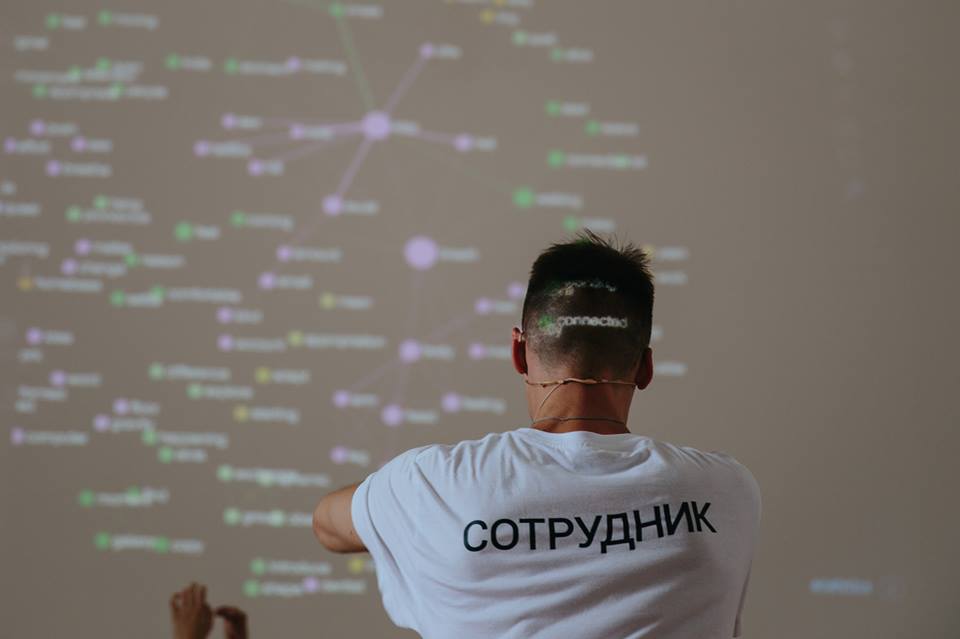
CCC is an annual event organized by Chaos Computer Club that attracts software engineers, technology professionals, activists and hackers from around the world.
In the frame of this year’s congress (35C3) we presented a talk on Bodymind Operating Systems and a series of workshops where we explored how we can use the notions derived from complex systems science and hacking to reprogram ourselves, and in turn, influence the development of artificial intelligence with the new insights we get from our body. In this article we want to expand those ideas and take them further.
The starting point is a proposition to think of the body as the “hardware” and our habits, patterns of behavior, morals, rules, and ethics as the “software”. We can then reverse-engineer the “code” our software runs, open source it, and reprogram it, so that it’s more aligned with the natural intelligence that can be observed in the living systems and in biology. The implications of this span far beyond the body itself: having a better embodied understanding of the natural principles that govern complex systems can provide us the knowledge that can be used in other contexts, outside of the physical realm. For example, to solve complex engineering problems and in the creation of the AI.
A Problem: the Gap between the Body and Technology
The problem that we address is a huge divide between the technology and the body today. Technology is too much concerned with the mind (the AI, neural networks, etc.), people are not in their bodies. The body is either ignored or relegated to the position of an imperfect tool that doesn’t work well enough and needs to be kept in shape, fixed, augmented, and improved in order to increase efficiency of its output. Elon Musk sleeps only 3 hours and startup entrepreneurs go to bed in their jogging clothes just to save time in the morning…
We often tend to forget that the human body is an endless source of natural biological intelligence, which we can harness to make better inventions. Without making it sound too esoteric, the body is, indeed, a very complex and sophisticated system that we can learn a lot from, especially if we are to create artificial intelligence. Making this link back to the body extends beyond merely being “fit”. We need to understand how it works and to start being creative with it: learning about various movement systems, healing techniques, body practices that harness the natural intelligence contained within the body, learning from it and with it. If we are to then put this intelligence back to work outside of the physical realm, it will also help us make whatever it is that we create, including the artificial intelligence, more humane. Empathic interfaces can only work if they know what it feels like to feel.
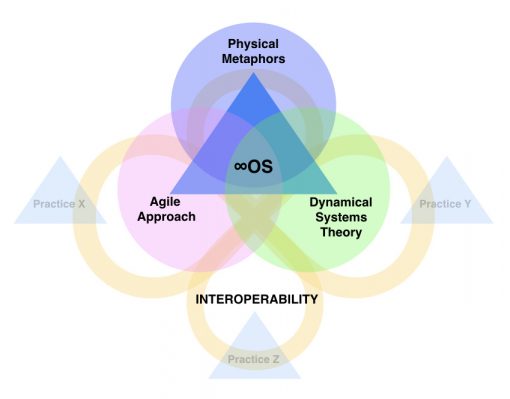
On the other hand, our bodies can also learn something from technology and various contemporary frameworks. Too often we are trapped inside outdated behavioral patterns and belief systems. It’s very ironic to see people talking about “resilience”, “adaptation”, “fluidity” and “flexibility” while being totally stuck in their bodies and in their habits. In fact, we are born with all those principles ingrained in us, however, the way we structured our culture, education and society gets us rid of all those good habits that evolution has so carefully selected for us. The reason this happens is that, on the one side, we delegated all those properties to technology and, on the other side, these skills are not necessary for bare survival (although they do increase our chances). It’s very likely that if we don’t do anything about regaining them back, natural selection will take care of it (and of us).
This gap between the body and technology should be addressed and we have to establish a feedback loop between body practices, embodied understanding, technology, and intelligence. Bringing back the natural into the artificial and vice versa (by way of mutations), reactivating the life-long relation between the nature and art.
A Solution: Embodied Understanding of Complex Systems
During the workshops at 35C3 we proposed a framework that we developed in Nodus Labs: ∞OS operating system — a kind of software for the human beings.
Step 1: Hacking the OS, or Entering the “Monitor Mode”
The first step is to use the hacking ethos to analyze the software we already run as the human beings: our beliefs, behavioral patterns, ideologies. To find the weakness, vulnerabilities, and inconsistencies in that code, to open source it, and to start rewriting it, so that we can have something a bit more useful that’s part of our everyday behavior. To switch into “monitor” mode.
That’s not an easy task: we need to know how “code” this software that runs in the body. This code has to be based on subconscious cognitive and physical patterns, because they can be easily “stored” physically on the level of reflexes — that was the insight of Jung, NLP, various spiritual and healing practitioners. So observation and becoming conscious of one’s patterns and the internal dynamics of the psyche and the mind is the first step.
Once we know how this code works, we can reverse engineer it and read it. Then we can keep the stuff that we find interesting and get rid of the stuff that are not necessary. The criteria here is very subjective and individual for every person. The only thing that can be recommended is to not fall into the trap of “optimization” or “efficiency”. After all, that’s not what hackers do. Leave these concerns to the Silicon Valley 🙂
Step 2: Pattern-based Assembler Language for the Bodymind
We found that one easy way to plunge into rewriting this code is to record this new knowledge through physical practice and interactive exercises. Body practice allows us to store information on the subconscious level. Remember how you can repeat something a few times to memorize it? That same thing can be done with very complex behavioral patterns and principles: we just need to create the right links in our system. Then these new behaviors should be readily available to be used in other contexts, outside of the physical realm, because they would be abstracted in such as a way as to be applicable in any situation. This concept was presented at our workshop on Bodymind Operating Systems at 35C3 along with some specific exercises that help to, first, reverse-engineer the code that we run, and, then, to rewrite it.
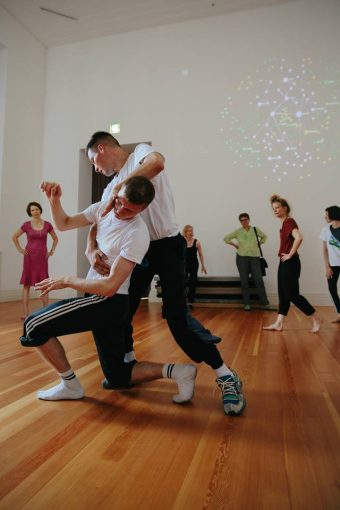
In this practice we use the agile approach: working through multiple frequent iterations, user feedback, discussions, reflecting to each other, sharing impressions, and changing one’s own behavior based on the information obtained.
The next step is to write the new program the code could execute. As mentioned before, this has to be a pattern-based code, so we use the image of ∞ or 8 (hence the name, ∞OS). The basic premise here is that most processes in living systems (on any scale) are based on oscillations and cascades. Our breathing and hearbeat, the propagation of signals along the neurons (and also along the social networks), prey-predator and species interrelations, circadian rhythms and seasons… The way we move is a complex oscillation too and what we perceive are the waves of different frequency and length.
Therefore, oscillations and cascades are the basic building blocks of the basic low-level programming language for the universe (and for the body). A kind of assembler for life itself.
If living systems are based on oscillations and cascades, then how do they interact? Through temporary synchronizations and propagation of cascades through the complex web of relations that these synchronizations produce. We use the term “confluence” to describe those interactions: the ability of a system to merge its flow to the flow of another system or of the environment.
So: oscillations, cascades and confluence.
Step 3: Switching to Master Mode: Generative Principles and Functions
We then need to construct the new functions based on these basic building blocks. Those will be based on some simple principles, which will help the new kind of complexity to emerge (just like in agent-based models of swarm behaviors).
These principles are the ones that are compatible with the ones that can be observed in resilient living systems: assimilative adaptivity, integrity, modularity, variability. Those same principles are often used in practical applications of complex science to build more resilient systems: think complex engineering structures and airplanes, internet infrastructure, and even the latest applications of this theory to psychology. Therefore, we can gain insight about those principles both from nature, from science, and from technology.
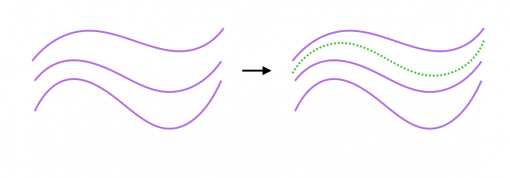
The principle of Assimilation. From ∞OS book.
The emphasis of our approach is on extending our understanding of those principles beyond the cognitive realm, into the body. Imagine an engineer working with resilience, for example. This engineer will have a much better understanding of this principle if she had an opportunity to experience it through her own body. Her understanding of resilience will be embodied, intuitive, immediately available on the subconscious for those very special moments when insight occurs (and those moments are almost always beyond the realm of rational thinking).
In order to better understand those principles, we propose a series of exercises (some of them were proposed in the second workshop “Hacking through the Body” at 35C3), which enable the participants to experience those principles through their bodies, in solo and interactive exercises, and to then see what kind of behaviors and dynamics they will produce.
As they say, “practice makes perfect”, so an important part of this approach is the continuous cultivation of those principles on the daily basis: both in the realm of the physical body and beyond (if we are to use them in other contexts). The training is just an activation of a certain new program. Once the training is over we can carry the feeling, the pattern, the program into our everyday life. Integrating it into our daily movements, interactions with others, but also into our work and life.
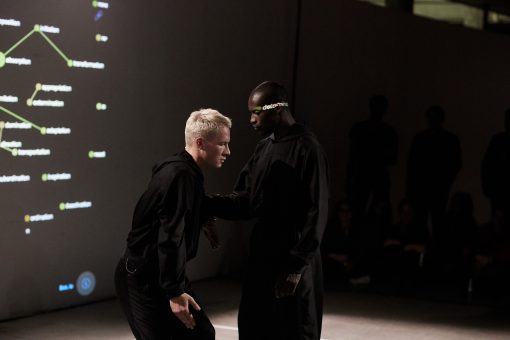
Performance with NSDOS / InfraNodus
Step 4: Bringing it to the Other Contexts, Including AI
The last step is to bring this new knowledge outside of the physical realm, into other contexts. One direct implication of this approach is that it will make our technology more humane, which is an important topic today especially in the light of doom scenarios in relation to AI development. Another implication is that our body can teach us how to be adaptive and creative. How to play with escalation and de-escalation, how to produce tension and to redirect it. How to move freely while also having a center of mass. How to connect different independent systems together into a coherent whole. How to regenerate itself and maintain non-equilibrium stability. How do to multitasking. How to have two and more systems that can govern behavior (thoughts and emotions). How to feel and respond, communicate and also be silent and listen, quietly, just letting sensations arise and disappear again into the echo of their reflections, a series of differences and repetitions, patterns and shapes.
…
There is much more depth to this subject, which we will explore in subsequent publications here and on 8os.io (also our GitHub). For now we want to direct the readers to our course on conflict dynamics that uses the principles of complex systems to propose a certain kind of game that involves escalation and de-escalation. For those interested in creative applications of this approach, check out www.polysingularity.com. Finally, our InfraNodus text network analysis and visualization makes use of the concept of Polysingularity and confluence to help generate insight from any discourse.

